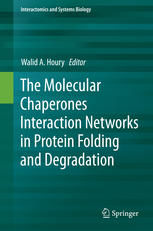

Most ebook files are in PDF format, so you can easily read them using various software such as Foxit Reader or directly on the Google Chrome browser.
Some ebook files are released by publishers in other formats such as .awz, .mobi, .epub, .fb2, etc. You may need to install specific software to read these formats on mobile/PC, such as Calibre.
Please read the tutorial at this link: https://ebookbell.com/faq
We offer FREE conversion to the popular formats you request; however, this may take some time. Therefore, right after payment, please email us, and we will try to provide the service as quickly as possible.
For some exceptional file formats or broken links (if any), please refrain from opening any disputes. Instead, email us first, and we will try to assist within a maximum of 6 hours.
EbookBell Team

4.7
96 reviewsMolecular chaperones are a fundamental group of proteins that have been identified only relatively recently. They are key components of a protein quality machinery in the cell which insures that the folding process of any newly-synthesized polypeptide chain results in the formation of a properly folded protein and that the folded protein is maintained in an active conformation throughout its functional lifetime. Molecular chaperones have been shown to play essential roles in cell viability under both normal and stress conditions. Chaperones can also assist in the unfolding and degradation of misfolded proteins and in disaggregating preformed protein aggregates. Chaperones are also involved in other cellular functions including protein translocation across membranes, vesicle fusion events, and protein secretion.
In recent years, tremendous advances have been made in our understanding of the biology, biochemistry, and biophysics of function of molecular chaperones. In addition, recent technical developments in the fields of proteomics and genomics allowed us to obtain a global view of chaperone interaction networks. Finally, there is now a growing interest in the role of molecular chaperones in diseases.
This book will provide a comprehensive analysis of the structure and function of the diverse systems of molecular chaperones and their role in cell stress responses and in diseases from a global network perspective.